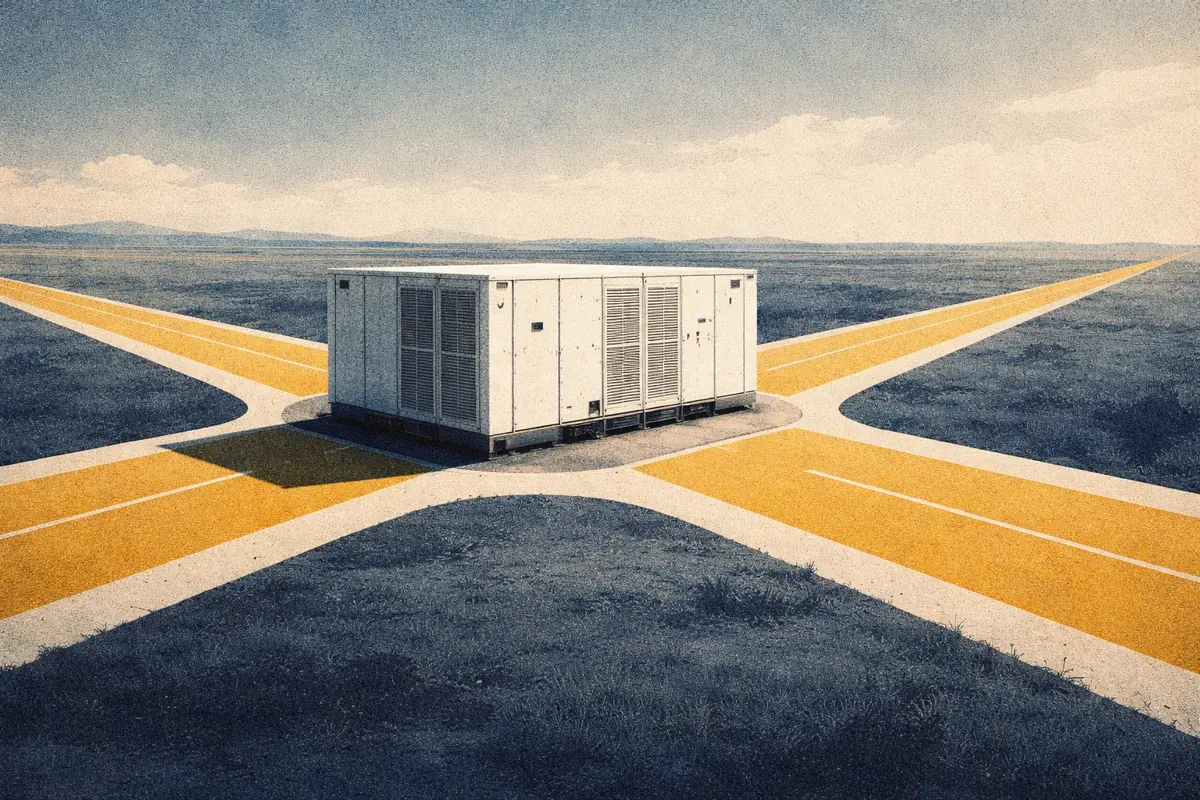How to build a battery energy storage revenue forecast in ERCOT
How to build a battery energy storage revenue forecast in ERCOT
Modo Energy has developed a forecast for battery energy storage revenues in ERCOT. The forecast allows battery owners, operators, developers, and financiers to understand revenue opportunities out to 2050.
You can customize your inputs to see revenue projections for batteries of different sizes, capacities, durations, and locations. This way, you can easily build and compare business cases based on different scenarios. To find out more, schedule a call now.
But how does the model actually work?
There are two main components of the forecast.
First, the production-cost model simulates the optimal economic dispatch of generation to meet demand. It does this at a 15-minute granularity, all the way out to 2050.
Second, the dispatch model simulates the operations of a single battery energy storage system. In doing so, it calculates the revenues and cycling rates of the battery.
It is critical to understand the assumptions that shape the forecast - and produce power prices (and, ultimately, battery energy storage revenues).
What is the production-cost model?
The production-cost model calculates generation output by technology type and location - to determine Energy prices in each region. Alongside this, Ancillary Service procurement is co-optimized in order to serve all demand - both for Energy and Ancillary Services - at the least cost to the system.
This then produces Energy and Ancillary Service prices, at 15-minute intervals.
A production-cost model requires several inputs to produce around-the-clock power prices.
1) Long-term demand forecast
The long-term demand forecast is the model’s main demand-side input.
The long-term demand forecast determines the total amount of energy required across ERCOT for every 15-minute time period.
ERCOT has its own Long-Term Load Forecast to determine projected demand across the next ten years. This is built on historical economic and weather data. It projects hourly demand - by both region and demand source (inc. baseload, flexible loads, rooftop solar, and electric vehicle charging).
In the last few months, ERCOT revised this forecast - resulting in a projected peak demand of around 150 GW by 2030.
However, much of this demand is potentially flexible, non-traditional demand. As a result, it may not actually contribute to peak demand during ERCOT's Four Coincident Peak periods in the summer. Additionally, the amount of generation set to realistically become operational by 2030 (based on ERCOT's generation interconnection queue) simply does not support this level of load growth by 2030.
Because of this, Modo’s long-term demand forecast instead relies primarily on the previous version of ERCOT's Long-Term Load Forecast - and extends that out to 2050, assuming annual growth rates. In addition, ERCOT’s newly revised version of its Long-Term Load Forecast informs more aggressive demand growth in Modo’s model.

The Modo forecast also includes projected Ancillary Service procurement requirements. ERCOT has published a Projected Ancillary Service Requirements dataset that provides hourly projections out to 2027. Modo Energy extends this dataset out to 2050 using the assumptions from the final year of data.
2) Generation capacity
The model’s main supply-side input is the generation capacity projection.
This determines the amount of generation that has been installed in ERCOT, and its breakdown by technology type.

The Modo Energy generation capacity forecast is an aggregation of many datasets, including:
- EIA Monthly Electric Generator Inventory.
- ERCOT Interconnection Queue.
- 2023 Annual Energy Outlook (or AEO - specifically, data from the Low Zero-Carbon Technology Cost scenario) from the US Energy Information Administration (EIA).
However, Modo’s own research shows that typical Interconnection Queue timelines have taken longer than projected. Because of this, the generation capacity model assumes that solar sites will take twice as long as stated in the Interconnection Queue, and that wind and battery sites will take three times longer than stated.
In addition to supply and demand models, what other factors impact the economics of forecasted energy production?
3) Outages
Modo Energy’s production-cost model also forecasts scheduled maintenance and unplanned outages.

Modo’s generation outages forecast is based on two primary data sources (both provided by ERCOT):
- 60-day SCED Generation Resource Data - which outlines plant-level operations data.
- Monthly Outlook for Resource Adequacy (MORA) - which tracks the nameplate capacity (size in MW) of each generation resource.
Modo has cross-referenced the telemetered resource status from the 60-day SCED data with the nameplate capacities listed in the MORA report. As a result, we can see historical outages for every 15-minute period, on a site-by-site basis.
This data is then aggregated by technology type into an availability percentage for each 15-minute period over the past three years. These proportional outage schedules repeat out to 2050.
So, how are these outages incorporated into the forecasted generation?
4) Capacity factors
Because large renewable energy generation (wind and solar) is intermittent, it is critical to model the output of these resources based on the weather conditions of each site.
The Modo Energy forecast considers the high sustained limits (HSLs) for each site in ERCOT, over time. For a given resource, its HSL represents its maximum sustained power output - for a curtailed solar or wind asset, this means the output it could provide if it were not curtailed.
The Modo Energy forecast uses the 2022 weather year to build out 15-minute capacity factors for wind and solar generation.

Modo’s forecast combines the single-year capacity factor model with the generation capacity model to project future wind and solar generation in every region, out to 2050.
However, this capacity factor model does not include curtailment. Instead, it calculates the total generation potential for each period. Also, using a single year of weather data provides a useful baseline - but does not capture all extreme weather scenarios.
5) Commodity prices
Lastly, Modo Energy’s production-cost model relies on commodity price assumptions to appropriately forecast the cost of energy production for each technology type. This determines their relative positions in the supply stack - and subsequently influences electricity prices.
These commodity prices are critical to modeling thermal generation resources. Commodity prices for natural gas and coal are sourced from the 2023 Annual Energy Outlook (AEO).
For nuclear sites, we make no assumptions about the costs of fuel or uranium. However, the forecast assumes that they are cheap enough for the plants to run 24/7, and act as price takers.
Similarly, for lignite plants, we assume a fuel cost of -$5/MWh - to ensure that these sites act as price takers. This is because the three lignite plants currently operational in ERCOT consistently do this.
How does the production-cost model inform battery energy storage revenues?
Modo Energy’s production-cost model allows forecast subscribers to see the following outputs for each 15-minute period out to 2050:
- Peak demand (GW).
- Total demand (TWh).
- Implied fuel costs ($/MWh).
- Generation capacity (GW).
- Generation by technology type (TWh).

In addition to these outputs, Energy prices ($/MWh) are calculated for the same time periods, for every region in ERCOT.

All of this ultimately feeds into Modo Energy’s dispatch model. This simulates the hypothetical performance of a battery energy storage system, based on custom specifications - such as size, duration, and location.
Check out the full forecast documentation for more details.
If you want to learn more about Modo Energy’s ERCOT Forecast for battery energy storage revenues, schedule a call today.







